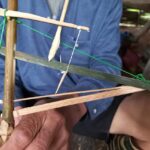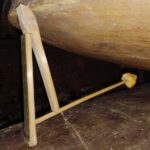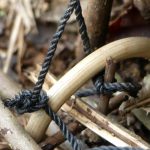Blowpipe hunting is still prevalent in many Orang Asli communities in Malaysia. Although the government strictly enforces hunting rules and regulations, it is practically impossible to supervise all the remote small hamlets and villages. On the other hand, it is also practically impossible for the Orang Asli people to travel outside villages to buy meat. There are often no roads, only waterways, and the people are very poor. They, therefore, resort to what they have done since eternal times: they live from the products of forest and waters.
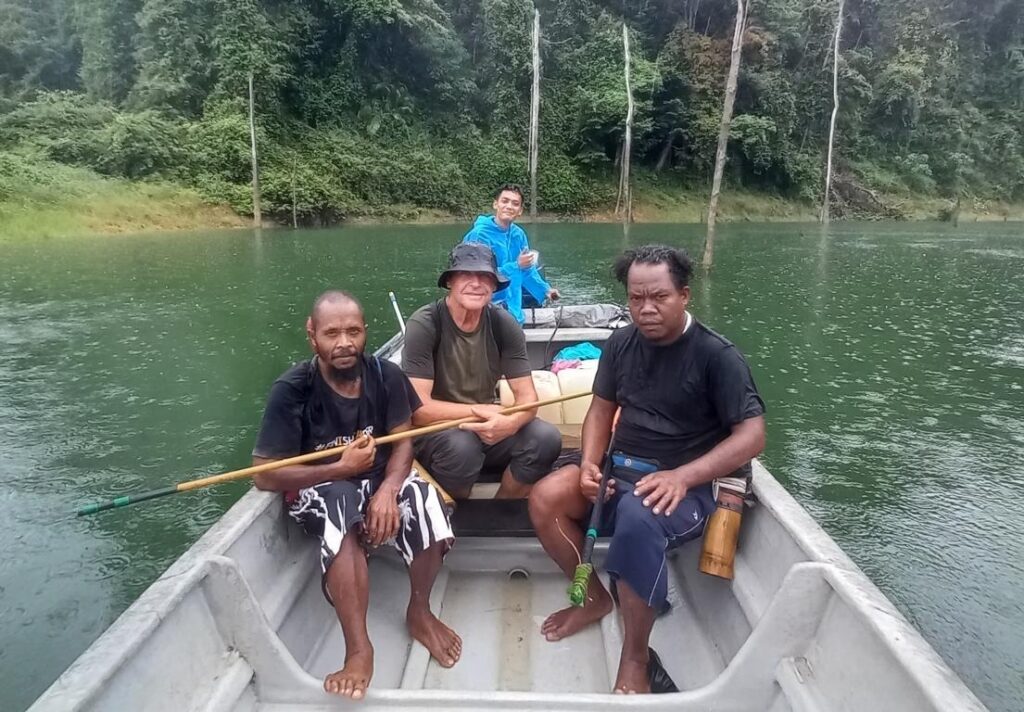
A Malay friend of mine was, in turn, a friend of a Jahai Orang Asli, whose parents lived near the Royal Belum State Park in the forest. Through this connection, I could visit the tiny village and hunt with them. The last time these people went hunting with foreigners before my visit in October 2023 was in 2017 when two British anthropologists from a London University accompanied them on a similar hunting trip.
I want to clarify that this hunt was not arranged for me, nor did I know which animals or species they wanted to hunt. I was just allowed to accompany them. They also told me that I had to cover my white hair, and if I could not keep up with them or was too noisy, I had to return to the boat. My friend had hired this boat with a boatman from outside to get to the Jahai village.
Which animal species are the Jahai Orang Asli people blowpipe hunting?
According to a study about ‘Hunting practices of the Jahai Indigenous community in Northern Peninsular Malaysia’ by V. Loke et al. (Oct 2019), the following animals are preferably hunted by the Jahai Orang Asli people:
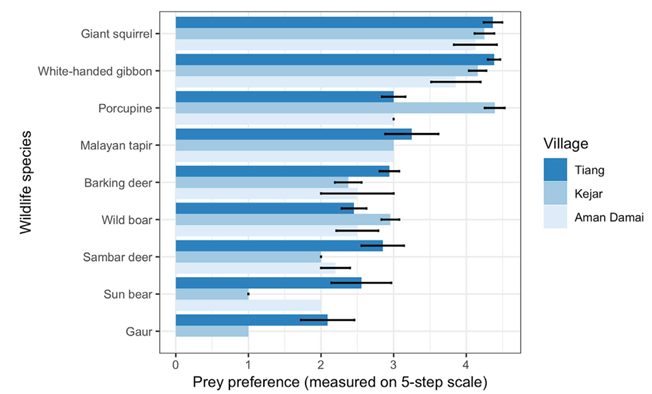
Black Giant Squirrels (Ratufa bicolor) and White-handed gibbons (Hylobates lar) are the most preferred animals hunted. Malayan porcupines (Hystrix brachyura) are explicitly hunted in one of the villages that were researched. All three species of animals are small- to midsized and, therefore, easy to transport back to their homes.

Chart: © V. Loke et al. at the link provided above.
The same study also mentions that Giant Squirrels and White-handed gibbons are exclusively hunted with blowpipes. Spears and traps are mainly used for porcupines.
As our two hunters only had a blowpipe and no spear, it is clear, in hindsight, that they targeted squirrels or gibbons. In the area of the Jahai Orang Asli people, three squirrel species occur: two flying squirrel species (Petaurista petaurista and Petaurista elegans) and the Black Giant Squirrel (Ratufa bicolor).
Two different gibbon species
The situation is more complicated with gibbons. Whereas the study above only mentions White-handed gibbons, in the area where we were present, the prevalent gibbon species at our place were Agile gibbons.
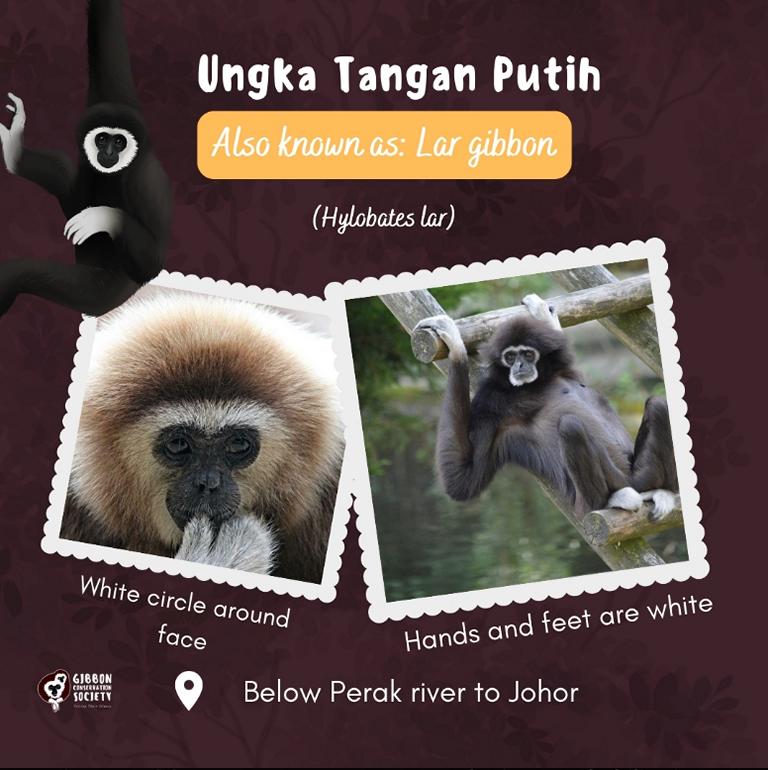

Both fact sheets: © Gibbon Conservation Society, see here.
I took a photo of a juvenile gibbon on one of the huts whose mother had been killed and eaten by our hunters before. This was definitely a ‘Wak-Wak,’ an Agile- or Black-handed Gibbon (Hylobates agilis). See the following photo.
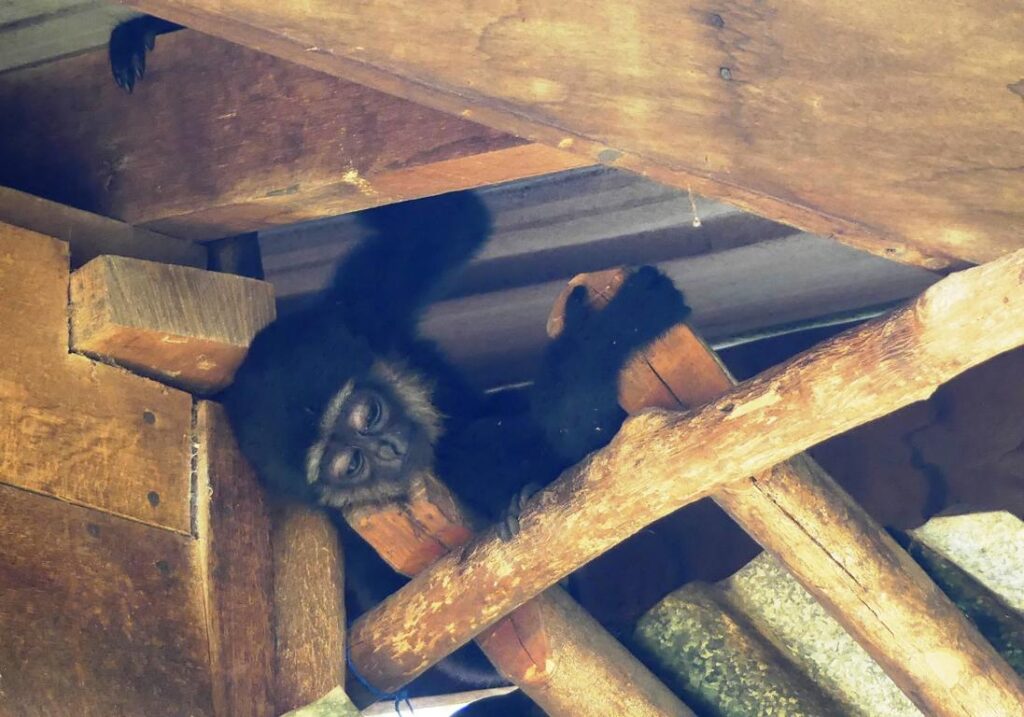
Although this picture will not qualify for a Pulitzer price, it can be seen that the hand and feet are black (not white), the two check beards are strongly developed, and the two arched, white lines above the eyes are thin. That is typical for an Agile Gibbon. My Jahai friend told me later that they always hunt this species and no others.
Reaching the hunting location
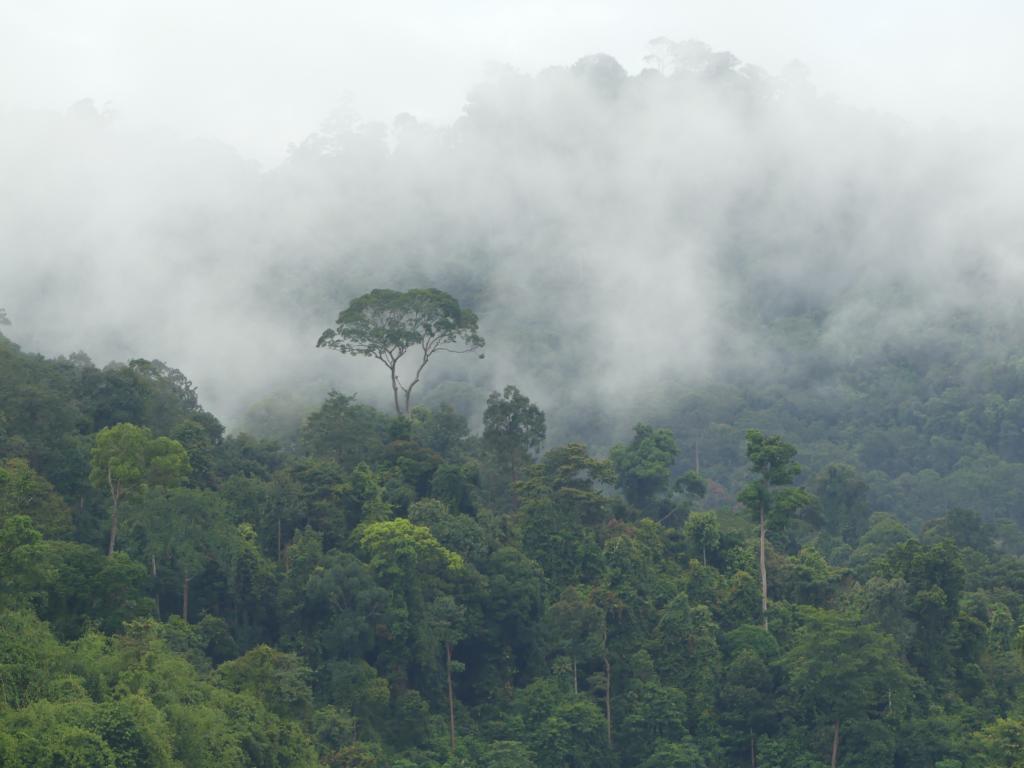
Around 8 am, our small hunting party got going. The party consisted of two seasoned Jahai Orang Asli hunters, my Orang Asli interpreter, and myself. The boatman brought us to the water’s edge, far from the village, where we could quickly enter the rainforest, and he waited there for our return. He wanted to offload us in the first place we were landing, but we had to return due to the danger of elephants being around. At the next landing point, the two hunters planned to walk up and down two steep hills separated by a small creek. Then, they wanted to climb a third, very steep, and high hill and walk on top of that hill along the ridgeline. Until we reached this ridgeline, I was unaware of which animal we sought to hunt.
Walking behind the hunters
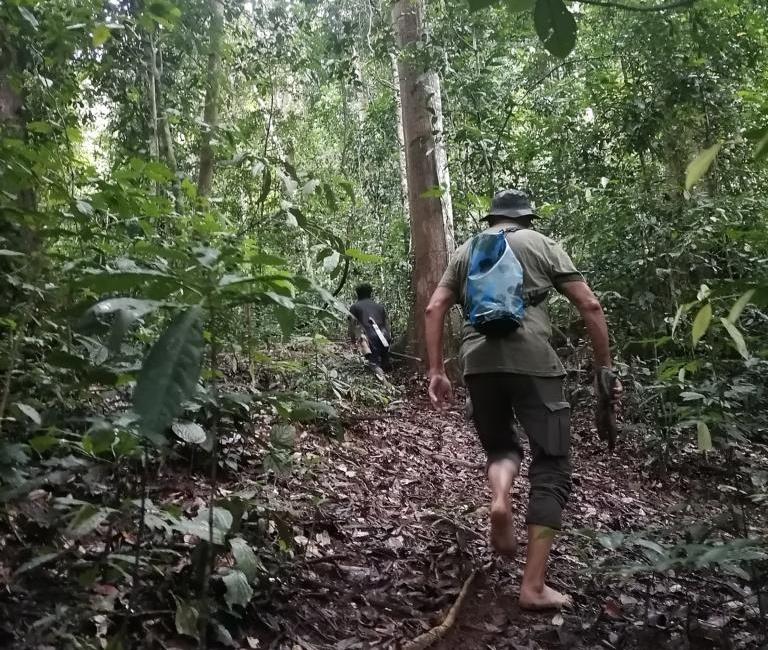
Walking in the rainforest behind the Orang Asli hunters was challenging. The first problem was that they walked unbelievably fast. It was no problem for me, as I am used to following local tribal people. However, my interpreter was a bit of a city sleeker. We repeatedly had to wait for him. Therefore, we split the party: I was walking with the leading Jahai hunter, and he was going with the other hunter. Finally, we met at a point both hunters agreed upon before.
Walking in the rainforest
The rainforest we were walking in was steep in certain places, consisting of wet clay, only covered by a very thin layer of leaves.
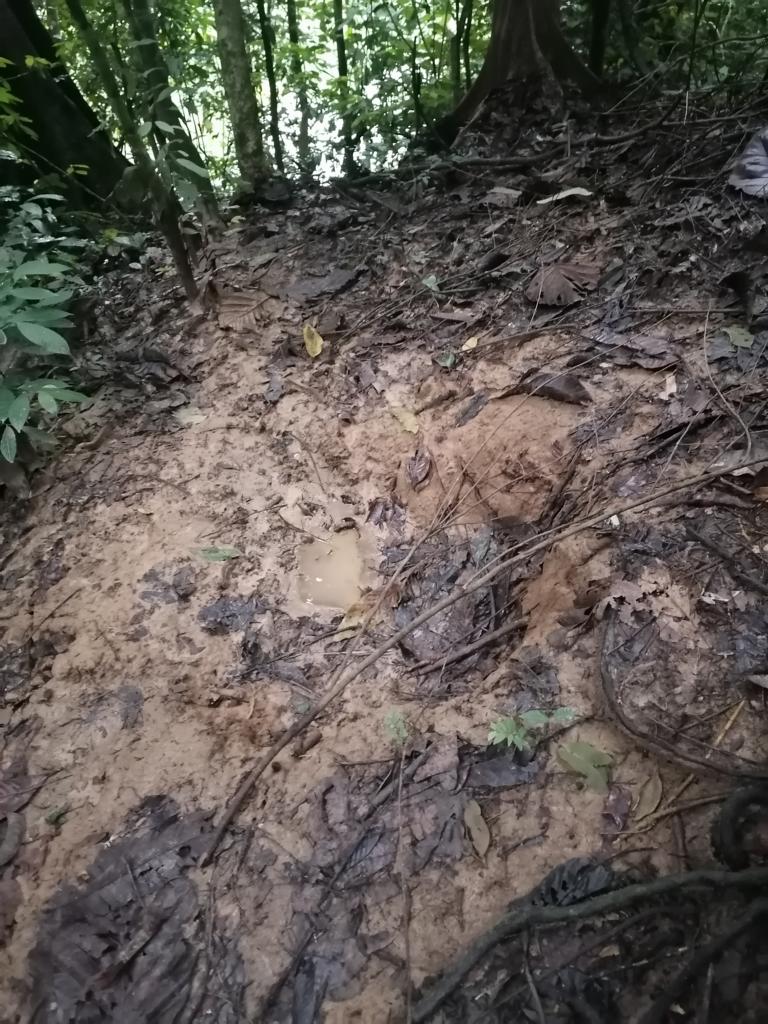
My beloved barefoot shoes were useless in these conditions, as they provided no grip on this soil. Therefore, I did what the locals did: I went barefoot.
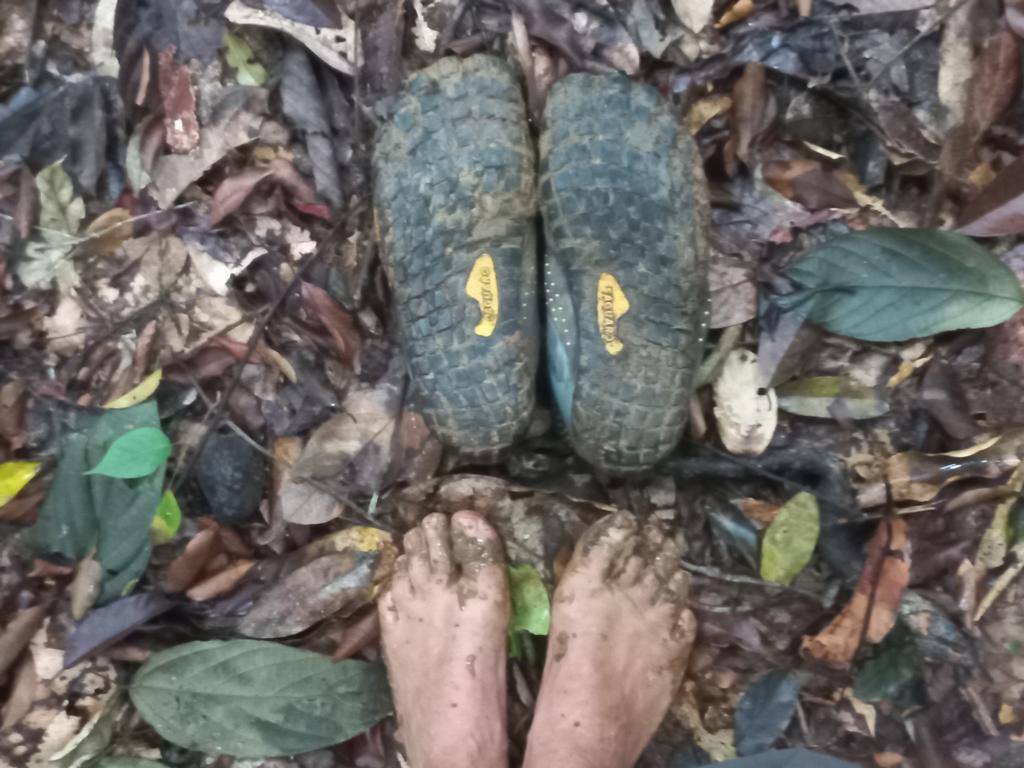
Walking barefoot under these conditions is excellent, as the toes can be used for gripping into the clay. Unfortunately, rattan palms regularly shed leaf sheaths covered with nasty thorns. Stepping on them barefoot will result in cuts, as I suffered.
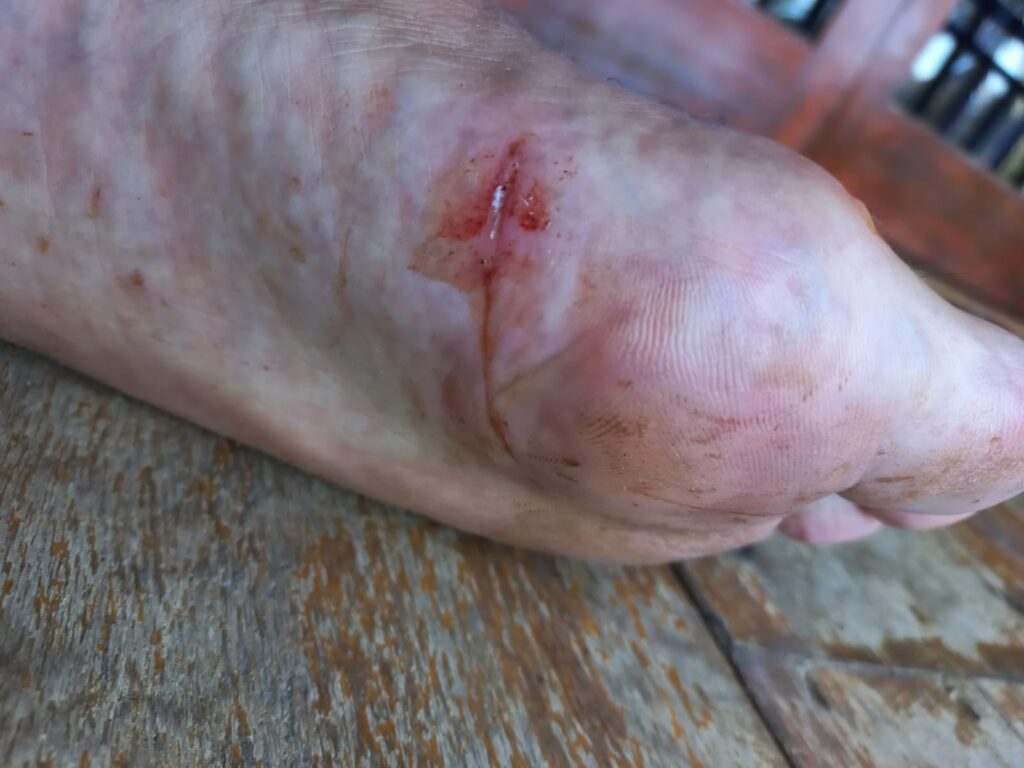
If these cuts would not be enough, leeches will happily suck the red juice when- and wherever they can. Although having rubbed tobacco juice onto my feet and legs before leaving and inspected my feet regularly during the walk, five leeches sucked themselves into an area of about one sq cm / 0.155 sq inch below my ankle bone (Lateral malleolus). This looked like a bunch of wiggling worms. I did not think of taking a photo when discovering them, but I ribbed them off as fast as possible.
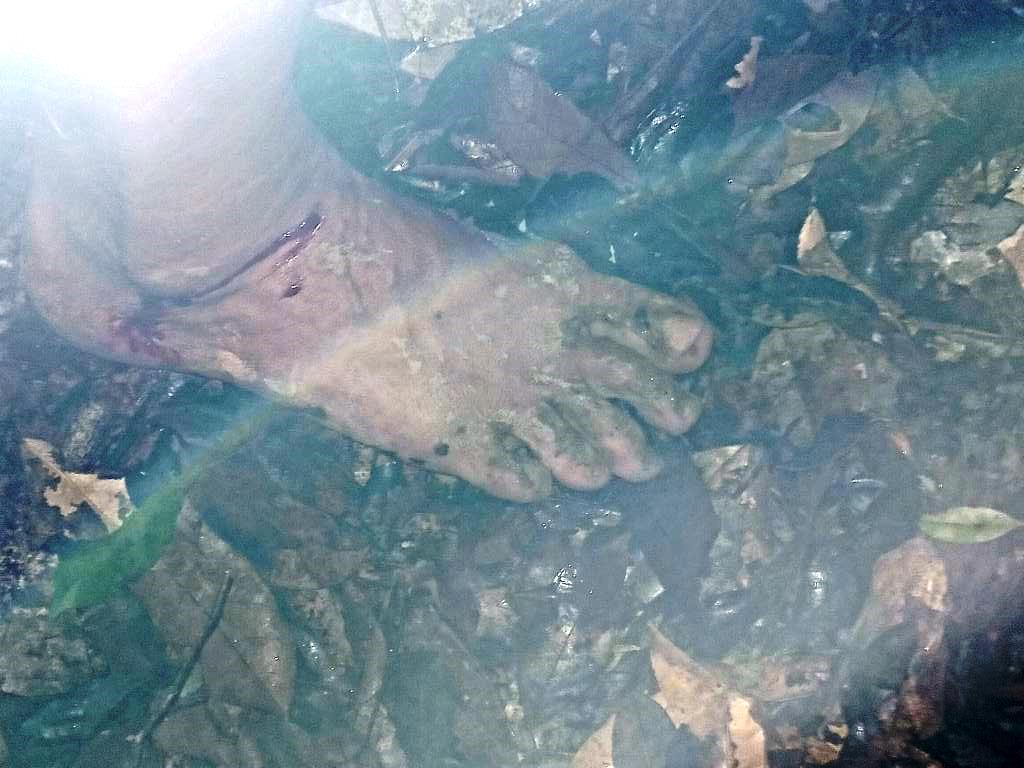
During our walk, we also encountered a Wagler’s pit viper (Tropidolaemus wagleri) lying on a branch next to us. This beautiful, well-camouflaged snake is highly venomous. The Jahai Orang Asli people do not catch and eat them; they only eat Reticulated phytons (Malayopython reticulatus) when they find them.
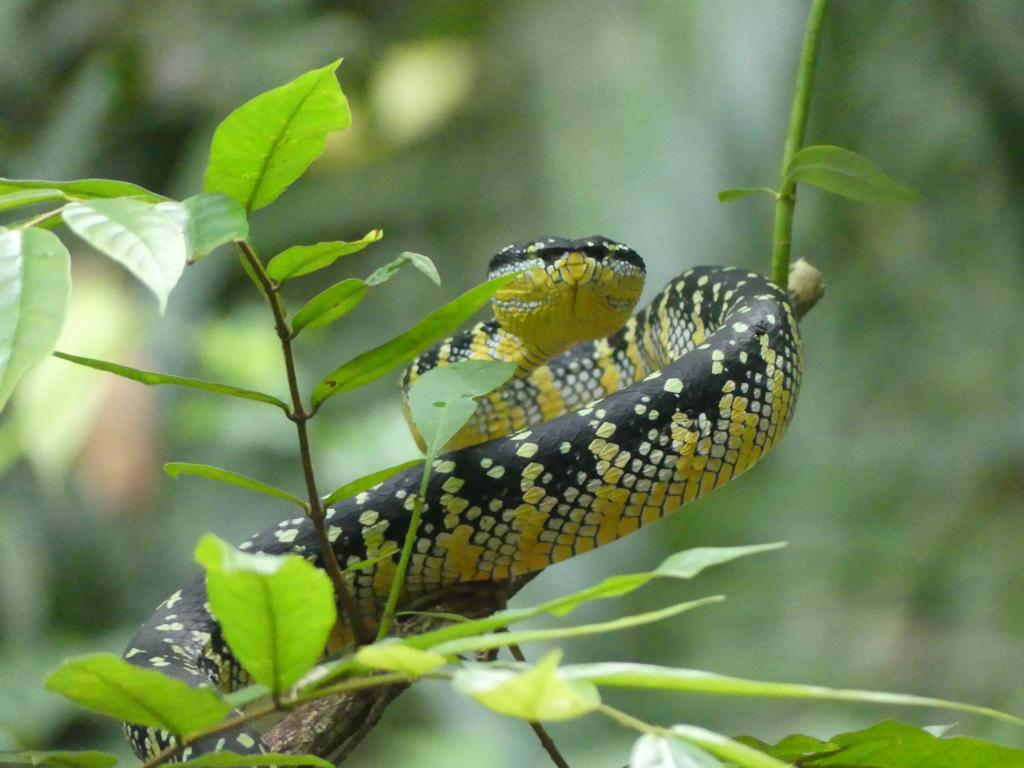
Equipment used for blowpipe hunting
Each hunter carried a blowpipe in a protective sheath, a quiver with about 15 poisoned darts, another quiver with Kapok wool as a wad, and a machete. I will describe all this equipment in more detail in one of the following articles.
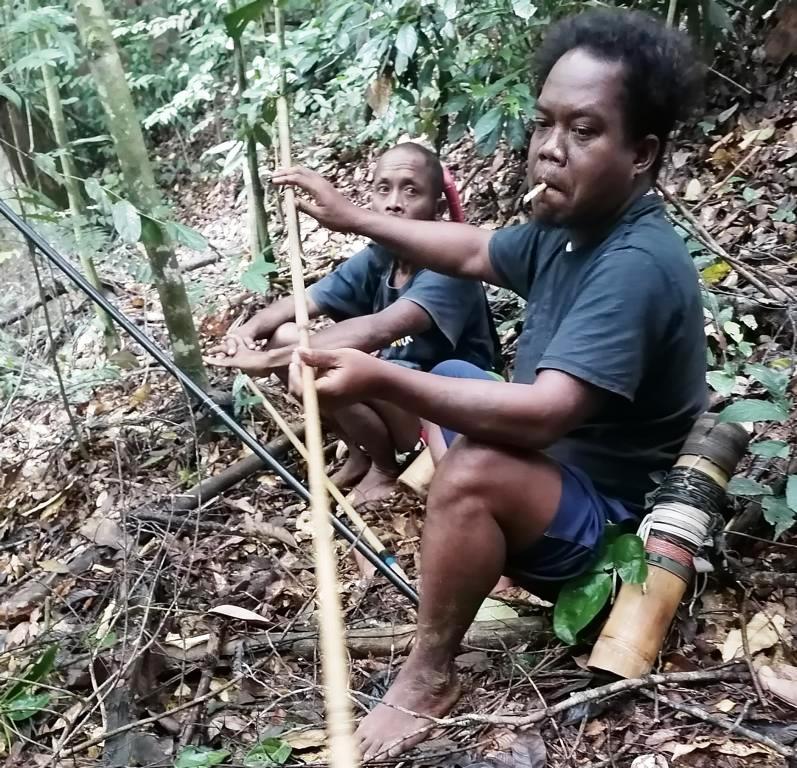
The hunt itself and its tragic outcome
After both hunters had met again on the ridgeline mentioned, we intensively listened to whooshing in the branches above, which is typical when monkeys move. Only then did I realize that we did not do blowpipe hunting for birds or squirrels. Furthermore, it also became clear to me why we chose this spot on the ridgeline. At this location, the gibbons crossed from one side of the hill to the other, where other gibbon troops were whooping.
Our hunter moved very carefully within this primary rainforest. As can be seen in the video, he shot a dart with a nearly noiseless blow into one of the 50 m high emergent trees and hit a gibbon. The gibbon nearly immediately crashed from the Dipterocarp tree and fell into the forest’s canopy layer. There, his body was caught in one of the abundant branched forks. There was no possibility of climbing the tree and retrieving the dead gibbon.
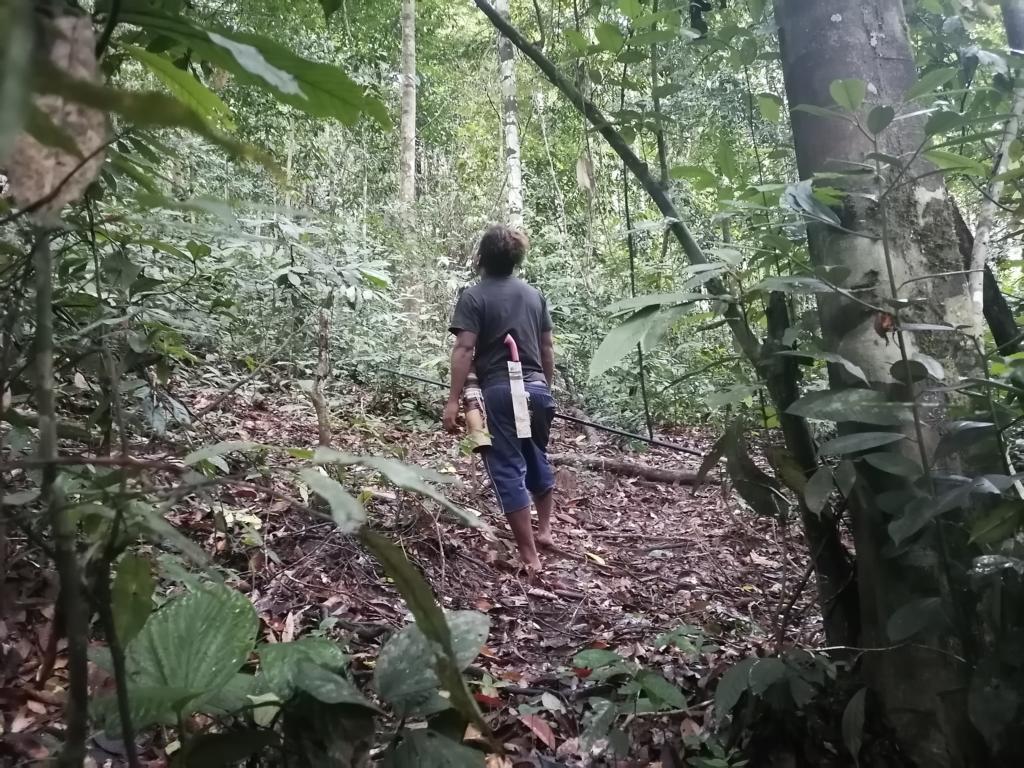
How blowpipe hunting proceeded further
However, things got worse. Both hunters separated and went on their own. The second hunter came back later with a sorry face. He also shot a gibbon caught up in the canopy layer. Our hunter did the same. Three gibbons were shot, and none of them could be retrieved! I asked how often they shoot a monkey, and it crashes down but cannot be retrieved. I did not get a direct answer to that question. Later, I learned that at least every second gibbon shot will be lost in the canopy layer. Tragic!
This experience was quite sobering for me. I asked myself if my presence in their village was nudging them to go blowpipe hunting and killing three gibbons without any use. The short answer is No. These two hunters would have hunted for meat in the forest anyway. I was allowed to accompany them, as I was the friend of one of their peers. And I was even a kind of disturbance to their usual activities. Nevertheless, the bad taste in my mouth lingered and is still lingering, that three gibbons had been killed in my presence, and none of them could be eaten. Moreover, no gibbons should be shot anyway for conservatory and legal reasons.
Lessons learned from blowpipe hunting with the Jahai Orang Asli people:
- The Jahai Orang Asli people I met were hunting Agile gibbons, not White-handed ones.
- Gumboots would be best for walking on the forest’s slippery, wet clay soil.
- Leeches are a real pest and have to be removed regularly.
- When hunting gibbons, Jahai Orang Asli people lose at least 50% of shot monkeys in forked branches in the forest canopy.
.



